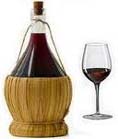Pork And Bacon - 3
from Italian Traditional Food
More about Pork and bacon
<<
Previous Page
3
Continuing the short article on pork and bacon
Other bacon joints are:
Collar: Weighs between 5 and 6 lb and is an excellent boiling joint as it is
evenly streaked with fat. A less expensive cut than gammon and more economical if cooked whole. It is also sold
divided into smaller joints and as rashers.
The forehock: This joint is the front leg of a pig and weighs about 8 lb. It
can be divided into three joints:
1. Butt. Average weight is 3 lb. This is the leanest cut: boil and serve
cold.
2. Fore-slipper. Average weight is about 1 lb. Similar to gammon slipper but
fatter and a coarser grain of meat. Boil and serve it cold.
3. Small hock. Average weight is 3 lb. High proportion of bone and a coarse
grain of meat. Boil and use for pate or mousse.
The whole forehock is frequently sold boned and rolled and this is the best and most economical
way to buy it. You can divide it yourself into small joints. Boil and serve it cold.
Bacon rashers
Choose bacon that has firm white fat with bright red flesh (unsmoked bacon should have deep pink
flesh). Avoid any that has yellowish, oily fat or flesh that is dark and dry looking. Bacon should smell pleasant.
The back of the pig is divided into certain cuts and sliced as rashers. Pieces can be boiled whole but it is more
usual to boil joints previously mentioned.
Back rashers
A good cut for frying and grilling, with about equal amounts of fat and lean.
Short back
Is very like the back rashers, but sliced into short rashers instead.
Long back
Long rasher bacon with a good proportion of lean to fat. Good for frying.
Top back
Lean cut, and often used like a gammon rasher (cut thickly and served with eggs, pineapple
et.).
Streaky
There are different cuts of this bacon, varying in width. Prime streaky is the widest and best
to use. This cut is full of flavour and goes well with liver, kidneys and for use with savouries.
Flank
A narrow rasher with a high proportion of fat. This can be fried to serve with liver; is also
used for lining a dish for a pate or for putting in bottom of the pan when braising.
Slicing bacon
Bacon is sliced in varying thicknesses. This depends to a certain extent on personal taste, but
as a general rule the thinner the cut the better.
Cuts may go in numbers: bacon rashers on display in shops are cut either at No.5 or 6, but for a
good, thin cut No.4 is best and will usually be cut on request. This will give a crisp but succulent rasher when
fried or grilled.
Preparation of rashers
In preparing rashers for cooking, cut away rind, rust (underside of bacon) and any pieces of
bone or gristle with scissors.
Flatten out the rashers on a board with the blade of a knife before grilling or frying them.
Page 2 of this article on pork and bacon can be found on the
previous page.
<<
Previous Page
3
Read more Italian Traditional Food
related articles here
| 

 Digg
Digg Stumbleupon
Stumbleupon Google Bookmarks
Google Bookmarks Delicious
Delicious Twitter
Twitter Facebook
Facebook Yahoo My Web
Yahoo My Web Reddit
Reddit